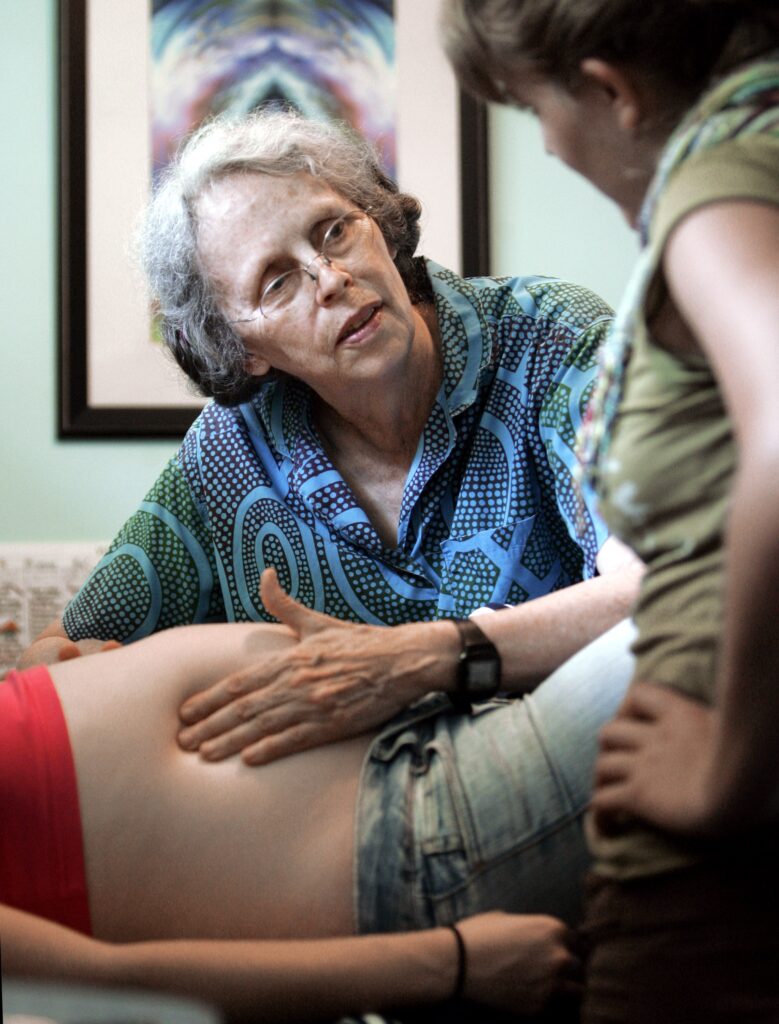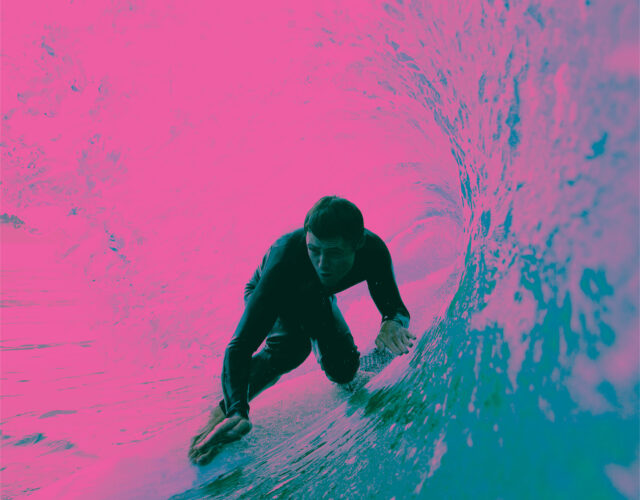David Kaiser and W. Patrick McCray, eds. Groovy Science: Knowledge, Innovation, and American Counterculture. University of Chicago Press, 2016. 416 pp. $25.
High atop a magic mountain near Santa Cruz, California, a bunch of hippies gathered in a grove of redwood trees for a wedding. Sunlight dappled the ground as the officiant, wearing a tie-dyed robe, welcomed the guests. The bride was radiant in her home-sewn, sunflowered dress; she wore her grey-blond hair in braided pigtails. The groom, barefoot and balding, sported flowers in what remained of his shaggy grey hair. After guiding guests in praises to the four sacred directions, the officiant called on the ancient spirits of trees and soil to help the new marriage take root and grow. All this was spoken in the Elvish language of J. R. R. Tolkien. Thankfully, the printed program explained the ceremony three ways: in undulant but impenetrable Elvish script, in Roman-letter transliteration, and, finally, in English. Then amid yelps and applause from friends and family, the happy couple leapt over a broomstick to legitimate their bond.
I attended this hodgepodge hippie wedding in 2004. Despite invitations to a hot-tub after party, no time machine was involved. But this long, strange trip did include real technology. After the ceremony guests celebrated with home-brewed mead and beer, ate artisanal cheeses, and shared refined chemical stimulants. I had just moved to California and, still in shock at soaring real-estate prices, wondered aloud how this hippie couple could afford their extraordinary mountaintop property: a two-story house with walls built of straw bales and plaster, a back deck, and a Jacuzzi, all of which the newlyweds had constructed and installed themselves. “Well,” one of the smiling bridesmaids answered, her flowing dress jingling with tiny bells, “the bride and groom are both engineers, and so am I. We build satellites.”
It all seemed totally out of this world. At the dawn of our new millennium the vibrations of the 1960s and 1970s counterculture were still reverberating. But this direct link to science and technology surprised me.
When imagining the polychrome ideologies, interests, and iconoclasts often associated with that counterculture, science and technology appear out of place—far out, perhaps. Enduring stereotypes depict free-thinking, free-loving, long-haired hippies who were antimodern, suspicious of science, and deeply critical of technology and technocracy. In 1969 left-leaning history professor Theodore Roszak famously named this “counter culture” and described it as a “subversion of the scientific worldview.” Connecting science and technology to the counterculture thus seems counterintuitive. But correcting that mistake is the exact aim of Groovy Science: Knowledge, Innovation, and the American Counterculture. The book’s 12 chapters, each written by a different author, flash back to the “long 1970s”—the pivotal period from the mid-1960s through the early 1980s. Each essay tells a trippy-but-true tale of the shifting practices, practitioners, and cultural values of science and technology in this turbulent era.
Young people enmeshed in the counterculture may have rejected many of the Cold War’s technologies, especially its missiles and mainframes, along with the power, patronage, and politics that produced them. But the counterculture—itself an amalgam of intentions, ideas, people, and performances—did not reject science and technology per se. Rather, its adherents embraced alternate approaches in their quest for new knowledge and new techniques, such as LSD-fueled attempts to speak with dolphins or instruments designed to locate acupuncture points. The book’s writers label such countercultural approaches groovy science, and their essays reveal ways the counterculture embraced science, albeit in untraditional ways. Colorful and controversial characters abound in these stories, including psychedelics zealot Timothy Leary, Playboy mogul Hugh Hefner, and Whole Earth Catalog publisher and space-colonies enthusiast Stewart Brand. But the chapters with less-familiar faces better illustrate how tightly science and technology were woven into the American counterculture’s kaleidoscopic tapestry.
Gordon “Grubby” Clark, for example, will likely be unknown to those unfamiliar with the $10 billion global surfing industry. Grubby Clark began surfing in Southern California while an engineering student at Pomona College in the 1950s. After graduation he earned his nickname working the Huntington Beach oil fields before quitting to become a full-time surfboard manufacturer. By the late 1960s Clark had helped launch what was later called the “shortboard revolution”—radically new designs that shrank a surfboard’s length by 3 feet and introduced industrial chemical processes to its production. On television viewers saw middle-class and mainstream Gidget riding a 10-foot wooden board with rounded nose and tail and a blocky fin. But in the late 1960s serious surfers adopted boards of only 6 or 7 feet in length with narrow points and raked and foiled fins. This shortboard revolution also took place amid a cultural revolution, where experimentation with petrochemicals to produce the shorter surfboards was accompanied by experimentation with psychotropic chemicals, such as hashish and LSD.
In 1973 the U.S. Senate revealed that a legally tax-exempt group of Laguna Beach surfers, known as the Brotherhood of Eternal Love, was running a $200 million global drug-smuggling ring through their surf-travel networks across South America, Hawaii, and Central and South Asia. According to the Senate, these hippie surfers had orchestrated “one of the largest and most complex drug systems in the history of this country’s narcotic law enforcement efforts.” No wonder acid evangelist Timothy Leary saw surfers as evolutionarily advanced “mutants” who rode nature’s energy bands and expressed individuality in pure contact with nature. Alvin Toffler, in Future Shock, named surfers “a signpost pointing to the future.” But the chapter by Peter Neushul and Peter Westwick, “Blowing Foam and Blowing Minds: Better Surfing through Chemistry,” describes how surfboard manufacturing by Grubby Clark and others relied on toxic industrial chemicals as ingredients in the polyurethane foam, polyester resin, and fiberglass used to make surfboards—just as surfing culture was increasingly linked to illicit chemicals.
A looser chemical connection appears in a chapter about 1970s eco-engineers who called themselves the New Alchemists. This countercultural group, led by a Canadian scientist named John Todd, adopted their alchemical identity as a symbol of their attempts to harness nature’s knowledge and so transform existing technological systems into something more sustainable. Henry Trim’s chapter, “A Quest for Permanence: The Ecological Visioneering of John Todd and the New Alchemy Institute,” tells how Todd and his group not only imagined a future of environmental and technological harmony; they also secured substantial grants from the Rockefeller Brothers Fund, the U.S. National Science Foundation, and the Canadian government to research and construct the closed ecological systems they called Ark bioshelters.
First at San Diego State University, then at Woods Hole Oceanographic Institute on Cape Cod, and later on Canada’s Prince Edward Island, Todd and his team of tinkerers and scientists refined their bioshelters, which when assembled looked like a ramshackle farmstead filled with geodesic greenhouses, dug-out fishponds, crop fields, and a series of water-pumping and electricity-generating windmills. The New Alchemists’ Arks incorporated renewable-energy systems, organic farming methods, and innovative aquaculture that adapted hydroponics to efficiently produce both fish and leafy greens. They imagined and built sustainable “life-support systems” in their attempts to connect sun, wind, biology, and architecture. Todd’s projects embodied an eco-pragmatic mode of visioneering, which historian W. Patrick McCray has defined as the cultivation of a vision of how technology might radically influence the future, the research and engineering required to propel that vision, and the promotion of that vision to policy makers and the public. The New Alchemists’ most ambitious Arks, not unlike the later Biosphere 2 project, never quite performed properly, succumbing to malfunctioning solar-heat collectors and leaky pipes, troubles that cascaded into other interconnected problems. Nonetheless, Todd’s visioneering occupied a middle ground between industrial modernity and an environmental ethos emblematic of 1970s-era efforts in groovy, eco-oriented science.

What about countercultural women and their connections to science? Historian Gretchen Lemke-Santangelo has argued that “hippie women . . . have long been ignored and marginalized, relegated to the sidelines of both the counterculture and the women’s movement.” Similarly, women too often get sidelined in histories of science and technology. Male characters dominate the stories in Groovy Science, except for an engaging chapter by historian of medicine Wendy Kline, “The Little Manual That Started a Revolution: How Hippie Midwifery Became Mainstream.” Kline excavates the origins and lasting impact of the popular book Spiritual Midwifery—a 1975 collection of hippie home-birth stories and advice from self-trained midwives. While promoting and performing home births, these midwives embraced mainstream medical knowledge and technologies—such as giving newborns silver nitrate eye drops to prevent conjunctivitis—despite male obstetricians’ accusations of midwives leading an “anti-intellectual–anti-science revolt.” These groovy women demanded the techniques involved in bringing babies into the world be integrated with their own experience, mysticism, feminism, and faith.
In the late 1960s, following a traumatic experience giving birth in a hospital, Joanne Santana discovered a slim manual titled Pregnancy, Childbirth and the Newborn: A Manual for Rural Midwives at a health-food store in the Haight-Ashbury district of San Francisco. More than a decade earlier a Stanford University thoracic surgeon named Leo Eloesser had written the manual for midwifery training courses in war-torn North China, which suffered a severe lack of obstetricians. The manual had traveled the world before Santana found it a few miles from its creator’s home institution. The manual became a guide for Santana and fellow hippie Ina May Gaskin, who both saw home births as exercising female empowerment and choice. Their earlier experiences included guiding births in the back of buses while touring in a caravan across the country. That caravan community of some 200 hippies eventually founded the Farm, an “intentional community” in Tennessee where the midwives continued their training, collected stories and data on the births they oversaw, and eventually published Spiritual Midwifery in 1975. The book’s popularity introduced hundreds of thousands of readers to the idea that medical doctors were not the only ones capable of delivering healthy babies in modern America. Spiritual Midwifery helped inspire a revolution in birth practices that endures.
Groovy Science is saturated with many more fascinating tales, from acid-fueled experiments in interspecies communication, to self-actualizing psychology, to the revival of artisanal cheese making. Yet more stories could be told. Women make few cameos here, and the collection suffers from an absence of stories about people of color: how, for instance, might groovy science and technology reorient our understanding of the Black Panthers or the United Farm Workers movements? Nonetheless, Groovy Science fundamentally expanded my consciousness. Members of the American counterculture may have been antiestablishment, but few entirely rejected science and technology. Instead, the counterculture sought science that was hands-on, human scaled, harmonious with nature, and in line with their spirituality—in other words, totally groovy.




